The Circus and its impact on the tattoo industry
How Sideshows Helped Make Tattooing Popular
22 March 2024
Since the Middle Ages, we've been attracted by travelling shows that exhibited the peculiarities of the different and unique. Anything different from “the norm” generated curiosity.
This has not changed much in modern times, it's inevitable, the exceptional attracts our attention.
For the tattoo world, history has been unprecedented. As, although they are now much more accepted by society, are part of almost every culture, and hardly anyone looks at them strangely any more…
… There was a not-too-distant time when a tattoo was very unusual. To such an extent, that people would pay to see others fully covered in tattoos.
It all began with the Sideshows, additional attractions to the circuses that ran parallel to the main carnival shows (hence the term). Such was the popularity of these shows and the cultural impact of tattooing, that it meant a turning point for this art form.
In a matter of time, tattoos went from being wanted to be seen to being wanted to be worn by a wide part of society.
But before we get into the positive resolution of this fascinating story, let's travel back in time and meet the great icons that were part of it.
Join us?
The beginnings of tattooing in circuses
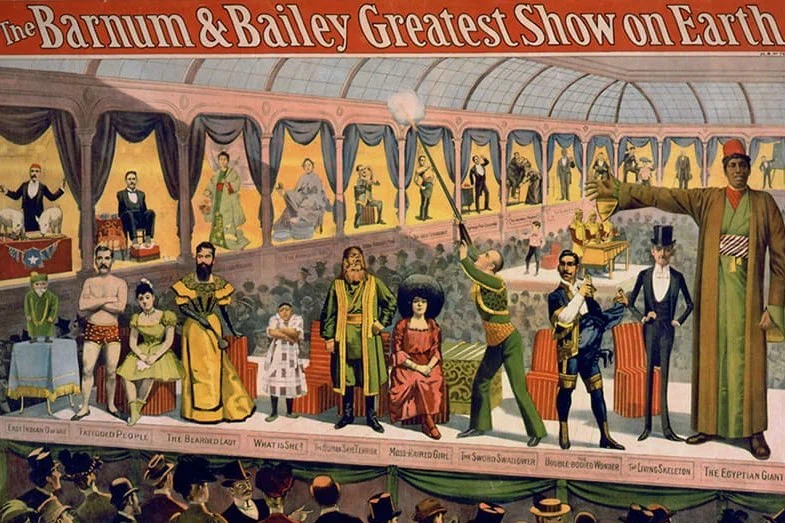
Sideshows began appearing in carnivals and fairs in the early 19th century in the United States in an attempt to complement traditional circuses.
Before that, tattoos were only seen among sailors, soldiers, and convicts, and were practised in ports, military barracks and prisons.
Are you familiar with Sailor Jerry, the sailor who pioneered the Old-School style?
Rumor has it that before becoming the tattoo legend we know today, he was involved in several Sideshows, which led him to catch an interest in tattooing and begin learning from other tattoo artists in the circus. Allegedly, it was after this experience that he decided to go full-time, becoming one of the most renowned tattoo artists of his time.
But prior to this, tattooing was not officially practised. In fact, it was not until its introduction in this type of show that actual tattoo shops as such began to appear.
At that time, only a small and excluded portion of society knew what tattooing was, and some had never even heard of it.
So, it was predictable that the novelty soon became a common interest and a perfect excuse to cash in on it.
We can't pinpoint exactly who prompted what, but it's believed that an early form of public tattoo entertainment was the display that sailors themselves did in taverns and inns when they returned from their journeys and showed off their tattoos while telling stories about their adventures at sea.
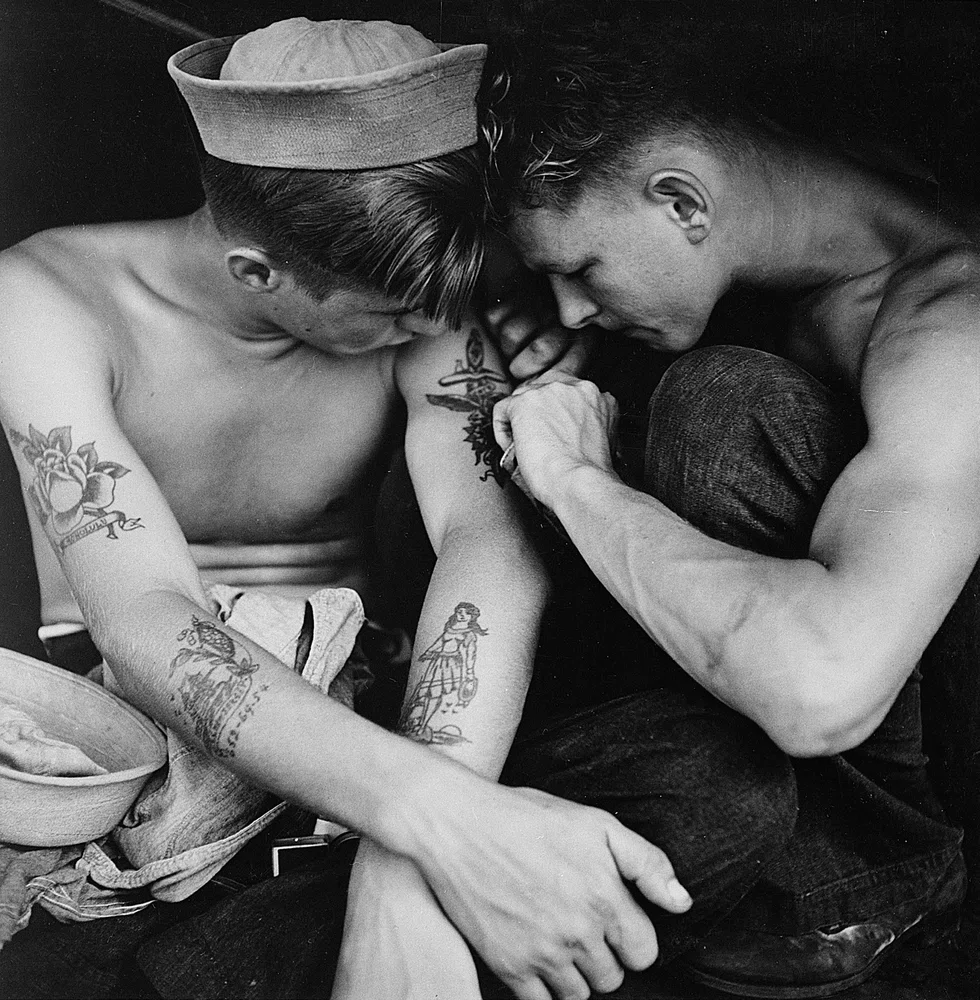
It's very likely that this habit helped to arouse the interest of the lay public.
At the same time, it's known that on many of these excursions to remote places, captured natives were sometimes brought along and taken as slaves to be exhibited without their consent. These had tribal motifs marked on their skin that were so unfamiliar that could intrigue any Westerner.
As it was something unseen before, people were willing to pay to watch these people who came from such different and unknown cultures.
Demand quickly created this new type of attraction, as well as new employment opportunities.
The first exhibitions of tattooed people
One of the best-known cases is that of Prince Giolo (Jeoly), from the island of Miangis, near the Philippines.
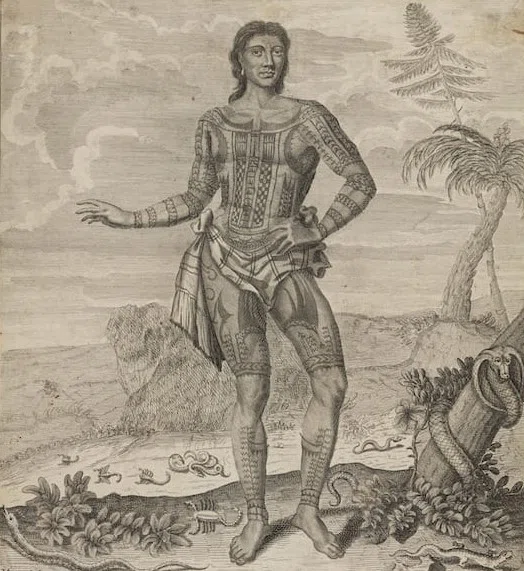
He's believed to have been bought as a slave by the adventurer-buccaneer William Dampier to be exhibited in Britain around 1690. Such was the ignorance and drama surrounding these people that, rumour has it, some believed their tattoos had the power to repel snakes.
Another popular case is that of Jean Baptiste, also known as “The Tattooed Prince”.

His story is as curious as debatable, and not even the most specialised historians clearly know its veracity.
Supposedly, he was a deserter from the French army who found refuge in the Marquesas Islands and managed to integrate with the natives to the point of being tattooed with symbols of their culture. Russian explorers eventually discovered him and returned to Europe, where he displayed his tattoos.
Although some similar cases from remote islands have been recorded, it's difficult to confirm their legitimacy, since there's a lot of distortion and uncertainty surrounding the facts.
Roughly speaking, what historians can verify is that in the beginning, this practice was stamped with immorality, exploitation and discrimination, until the exhibitionists began to join in voluntarily.
Only then did the course of history become a little clearer.
An incredible story for each tattooed person
These new shows were curiously presented alongside fantastic stories and unbelievable fables of dubious provenance. They were part of the show and fascinated the spectators, who were astonished and would pay anything to be horrified by these “wild” tales.
Although they are quite interesting, we can't tell them all. So, we'll choose the one that we believe best represents it.
The case of Nora Hildebrandt —even if it's more suspicious than true— is worth telling…
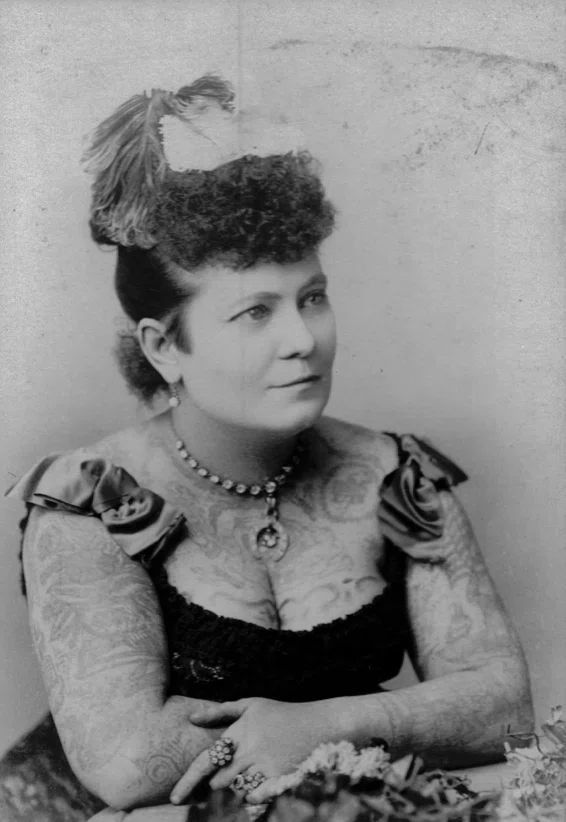
She's known as the first tattooed woman in history (1860 approx.). She was the daughter of German sailor and tattoo artist Martin Hildebrandt.
She personally claimed that she was held hostage by Sitting Bull —an important leader of the Native American culture— and that she was tied to a tree to be forcibly tattooed by her father. She told how they were promised freedom if her father tattooed his warriors, but one of them accused him of an intoxication attempt, so the Chief changed his mind and ordered him to tattoo his daughter from head to toe.
According to Nora, after working 6 hours a day for a year, he completed 365 designs. And then he was killed for faking having broken the needle.
Her testimony continues that after the traumatic event, she was “miraculously” saved by General George Crooke. And after a few days, while she was in the hospital, she was found by Adam Forepaugh —owner of the Adam Forepaugh Circus company— and Mr. W.K. Leary —a publicist and agent who worked with several circuses—, who convinced her to perform in their show.
She was promoted as “The one and only”.
This wacky folktale has been Nora's trademark since early times. Some say she made it up to avoid being branded by a society that, while marvelling at tattooing, still condemned women for certain “inappropriate” behaviour.
Being “forcibly” tattooed was the perfect excuse to be absolved.
Ironically, the incorporation of the female figure into the tattoo show was a success, as they attracted large audiences and sometimes even upstaged the male attractions.
In fact, few jobs for women at the time paid as much as these exhibitions. So, it was not long before more women began to join the tattoo show.
And so, the public tattoo scene was soon filled with leading figures who, to this day, have left their mark on history. Let's take a brief look at those best-known.
The leading names of tattooing in Sideshows
Betty Broadbent.
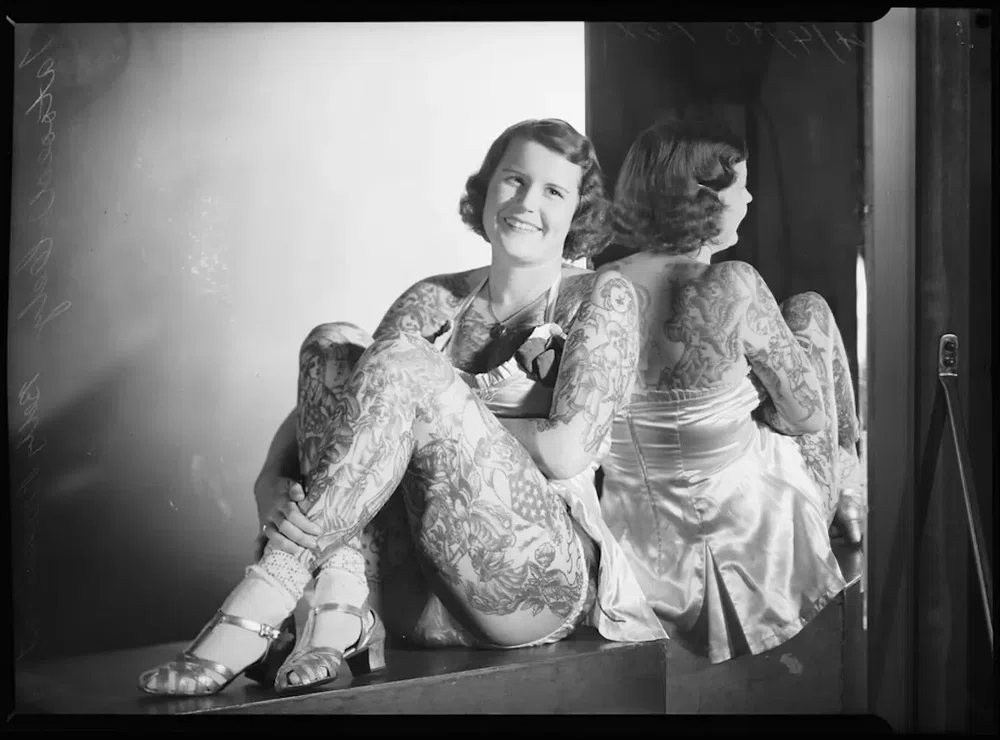
- She began as a tattoo exhibitionist in the mid-1920s for the Ringling Bros. Barnum & Bailey Circus, after renowned tattoo artists Charlie Wagner and Joe Van Hart made her a bodysuit.
- Over the years, she ended up practising the craft herself. She was one of the first women tattoo artists. In fact, many women took up the profession. We tell you more about it in our article: The role of women in the history of tattooing.
Fun fact: it often happened that tattooed people ended up becoming professional tattoo artists. - She remained on the scene for about 40 years, finally retiring in 1967.
- In 1981, he became the first person to be honoured by the Tattoo Hall of Fame.
Jack Dracula
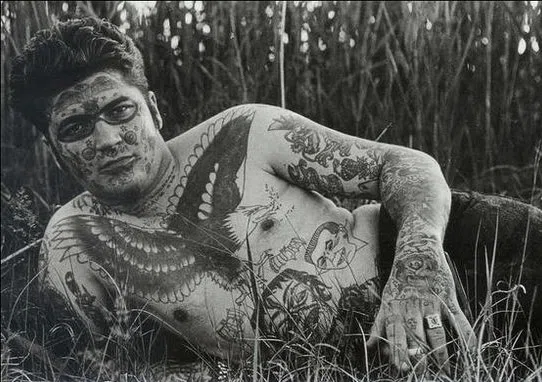
- He acted for 50 years as a tattooed man. It's said that he had 405 tattoos.
- He is mostly known for his face tattoos, which were very unusual at the time.
- He was part of the Ringling Brothers Barnum Bailey Circus. He also worked at Dave Rosen's Wonderland Sideshow, Jerry Lipko's Shows and the Huber Museum in New York.
Mrs. Bohrman, AKA Lyda Akado
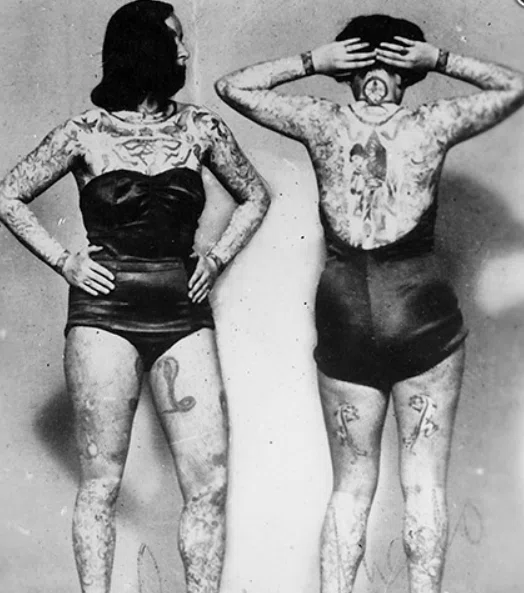
- German-born, she's another great icon who began performing for the Ringling Bros. Barnum & Bailey Circus in the 1940s.
- She was tattooed by the German artist Hans Ullrich in a distinct style that could be classified as Japanese-American-German meets Art Deco.
- Because of this peculiar style, she was promoted as “The new look in tattoos”.
- Hans, together with his wife Ruth, were very popular in the tattoo world. They were members of the Tattoo Club of America, and Butterfly Club. While she was president of the German Ladies' Tattoo Club.
It was common to find husband and wife duos dedicated to the tattoo show. It seemed a wise way to join forces to earn a recognised place in the circus world.
Ethel Martin, AKA Lady Viola
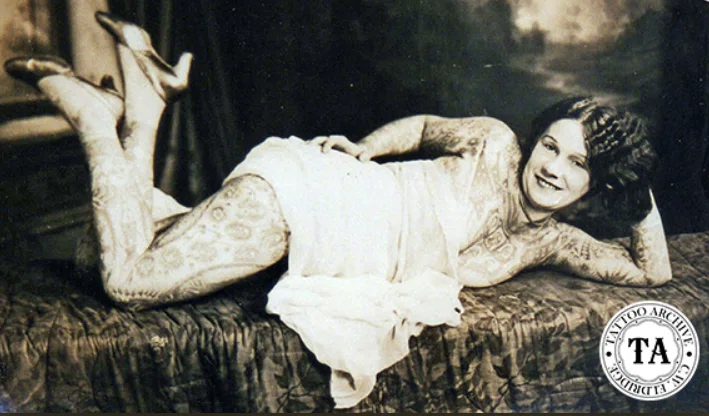
- She was known as “The most beautiful tattooed woman in the world”.
- She took up the trade to travel and work with her husband, Captain Gulliver, who, at 2 metres and 50 cm tall, was already making a living as a circus giant.
- It's known that she was tattooed by Frank Graf in the 1920s, and that the technique he used in his pieces was ahead of its time.
Some testimonies stated that it was the first time they had seen a tattoo artist create such recognisable portraits.
Charlie Chaplin, Tom Mix and Presidents Wilson, Washington and Lincoln were among those he wore. - She worked for decades in the show business and was active until the age of 73.
Artoria Gibbons
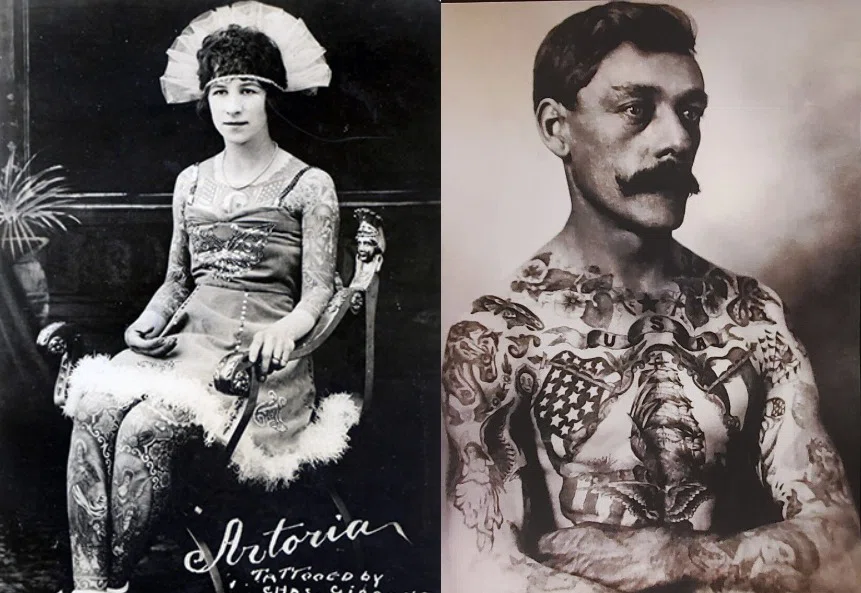
- She was married to tattoo artist Charles "Red" Gibbons, who's said to be one of the best of his generation.
- Her tattoos covered more than 80% of her body.
- Some of these pieces were magnificent reproductions of renowned paintings by Raphael and Michelangelo.
- She performed for more than 5 decades, being part of the biggest shows of the era, including the legendary Ringling, Barnum & Bailey Brothers Circus and the Hagenbeck-Wallace.
- She was one of the highest paid of the era and was billed as "The Highest Salaried Tattooed Lady".
- Today, her daughter is cross-checking everything that has been said about her life, as there have been some distortions of the story in the records. She's putting it all together in a book dedicated to the life and work of her parents, who were great icons of the time.
The Hamiltons, Ted & Myrtle
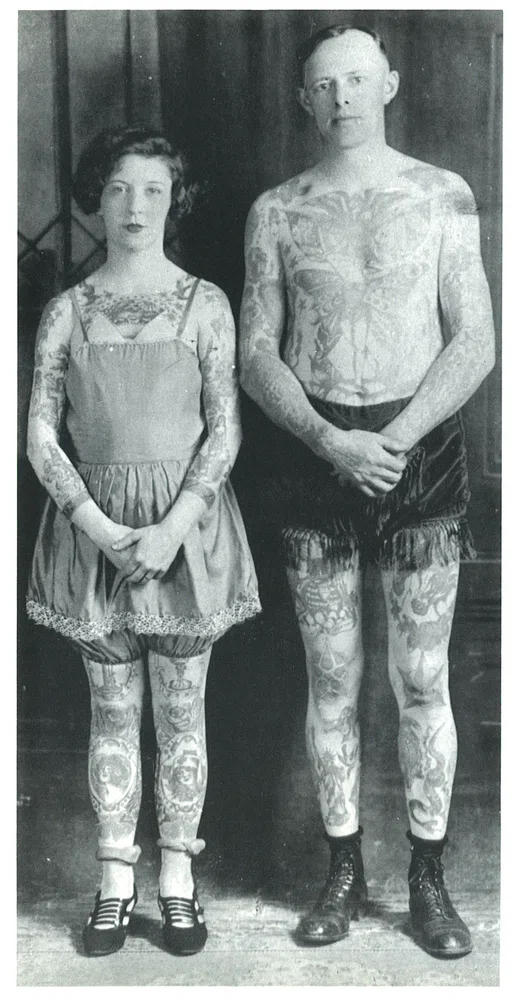
- Another well-known show business couple of the 1920s and 30s; he tattooed, and she displayed her tattoos.
- She was popular for having a large peacock back piece done by the legendary tattooist and machine builder Percy Waters. Was billed as “The tattooed doll”.
- And he was known to have worked with the renowned tattooist Milton Zeis (AKA Uncle Miltie), another great legend of the era, known as “The King of Tattooists”.
Maud & Gus Wagner
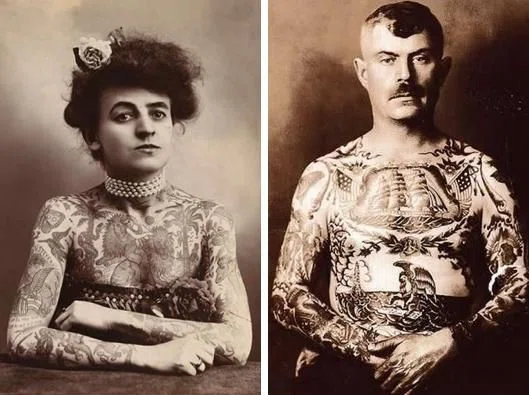
- She's known for being the first female tattoo artist.
- She started out as an aerialist and contortionist. There she met her husband and mentor, tattoo artist Gus Wagner, who soon filled her with tattoos. She became so fascinated with the craft that she decided to learn it.
- Eventually, they left the circuses to devote themselves full-time to tattooing officially.
- Both were pioneers in the tattoo scene and are well known to this day.
These have been just some of the most popular figures of the time, either for having served as a canvas or for having marked the skin of such historical characters.
History is fascinating and full of curious cases to investigate, but unfortunately, little has been written about the lives and careers of these people and much has been divulged without knowing the true facts in depth. Which leaves us with a lot of unchecked information.
Just a few newspaper articles, some archive footage and word of mouth, but not much more.
There's a lot left to discover, and historians are still working to bring this important and significant part of tattoo history up to date. C.W. Eldridge, Anna Felicity Friedman and Lars Krutak are some current active experts in the field.
Nevertheless, it continues to fascinate us how the exposure of tattoos at the Sideshows helped pave the way for the modern industry.
The commercialization of the tattoo as we know it today
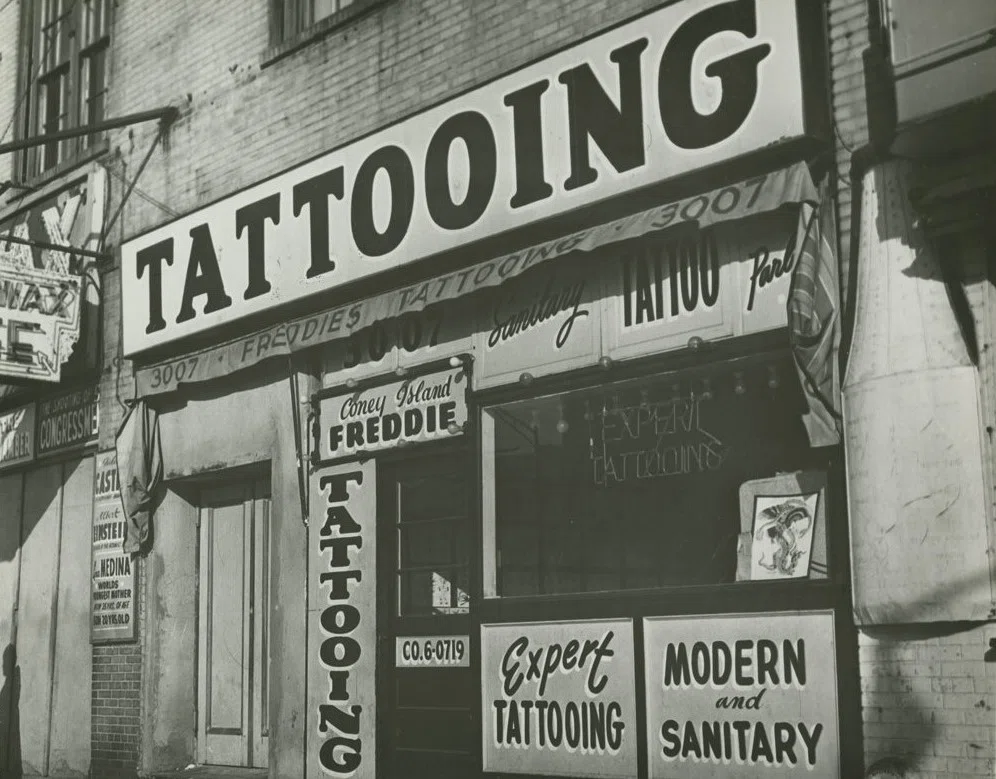
Few events so significantly impacted the tattoo business.
By the mid-20th century, the Sideshows had achieved considerable fame. At that time, more than 300 fully tattooed men and women were making a living at it. And such was the visibility of the art that tattooing had become a much more dignified and lucrative profession.
In short, the exposure of tattoos in circus sideshows:
- Spread an art form that little was known about until then.
- Created a new occupation, as being tattooed became a stable livelihood.
- And provided new and better possibilities for tattoo professionals, giving rise to the first official studios.
Overall, it dramatically benefited a working field that was still emerging and gave it the recognition it needed to grow and evolve in the market.
But nothing lasts forever. With the passing of time and historical events, society continued to fluctuate, the popularity of the Sideshows gradually began to wane, and tattooing took its independent and successful course.
Today, Sideshows are less common and many consider them to be relics of a bygone era. However, some events and venues still offer them, often as part of a wider carnival or circus experience, but not with the imprint they used to have.
As for us, we are left with the remnants of a curious, fascinating and somewhat mysterious history. Another chapter in the history of tattoos has left its footprint.
Had you ever heard of tattoos in circuses? What do you think about this first public recognition of our art? If the tattoo’s history captivates you, we invite you to find out more about it here.